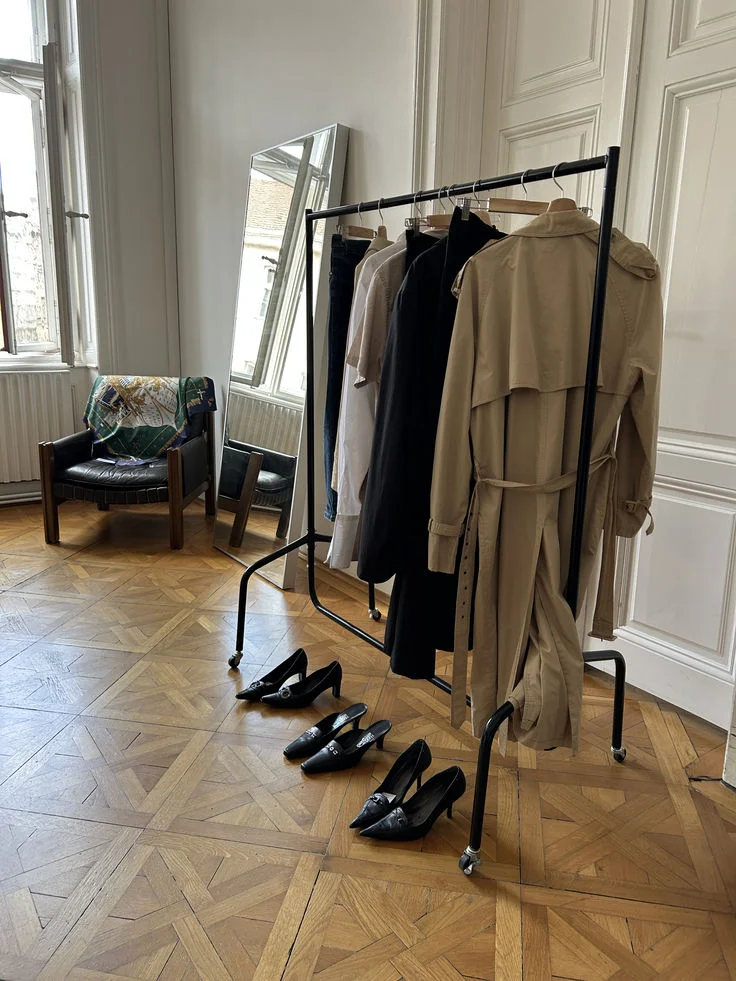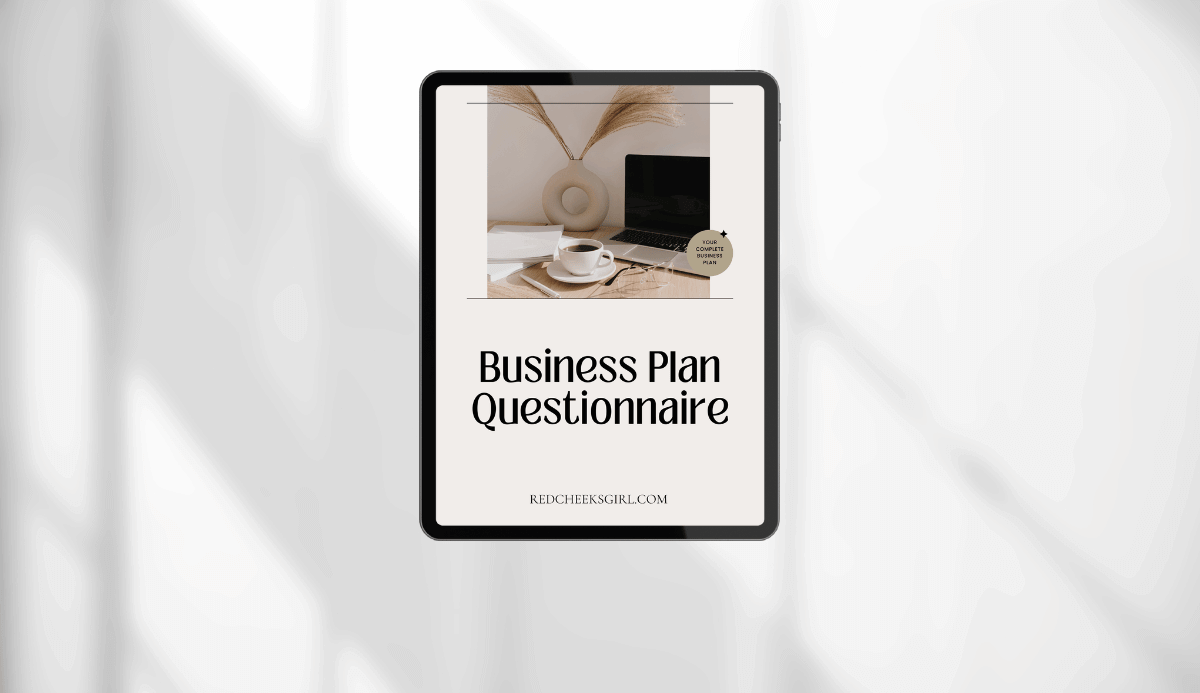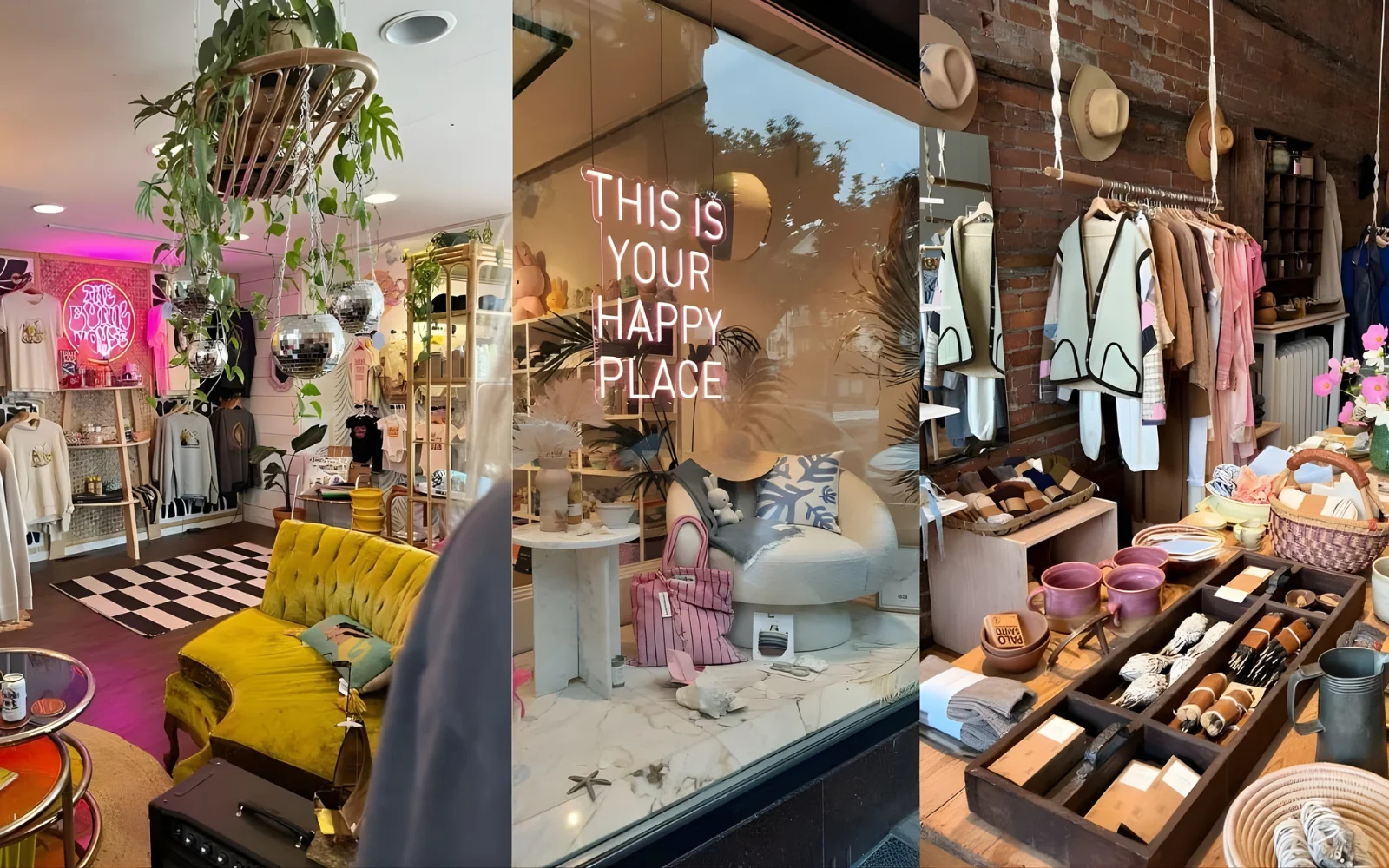
Ready to turn your love for vintage fashion into a thriving online business? You’re in the right place! Let’s build something amazing together.
Have you noticed how everyone’s talking about sustainable fashion these days? Your timing couldn’t be better! The vintage clothing market is absolutely booming, and platforms like Etsy are making it easier than ever to reach customers who are hungry for unique, eco-friendly fashion choices.
Here’s the exciting part: the global vintage clothing market was valued at $36 billion in 2023 and is expected to reach $64 billion by 2030. That’s not just growth – that’s explosive opportunity waiting for someone like you to grab it!
Market Research: Understanding Your Golden Opportunity
The Numbers That’ll Get You Excited
Let’s talk real data here, because these numbers are seriously encouraging:
| Market Segment | 2023 Value | 2030 Projection | Growth Rate |
|---|---|---|---|
| Global Vintage Market | $36 billion | $64 billion | 8.2% annually |
| Online Vintage Sales | $15 billion | $28 billion | 9.1% annually |
| Etsy Fashion Sales | $1.8 billion | $3.2 billion | 8.5% annually |
Who’s Shopping for Vintage?
Your ideal customers are probably a lot like you! Here’s who’s driving this amazing market:
- Gen Z & Millennials (ages 18-40): They make up 70% of vintage buyers
- Income level: $40,000-$100,000 annually
- Values: Sustainability, uniqueness, authenticity
- Shopping behavior: 45% shop vintage monthly, 23% weekly
Step 1: Define Your Vision and Niche

Before you dive in, let’s get crystal clear on what makes your shop special. Ask yourself:
- What era speaks to your soul? (1950s elegance? 1990s grunge?)
- Are you focusing on everyday wear or statement pieces?
- What’s your size range going to be?
- Will you specialize in certain brands or styles?
Pro tip: The most successful vintage shops have a clear point of view. Think of yourself as a curator, not just a seller!
Step 2: Competitive Analysis
Let’s check out what’s working in the real world. Here are some inspiring success stories:
Successful Vintage Etsy Shops to Learn From
- Shop since: 2012
- Sales: Over 24,000
- Specialty: Designer vintage from 1960s-1980s
- What they do right: Amazing photography, detailed descriptions, consistent branding
- Shop since: 2017
- Sales: Over 2,000
- Specialty: Antique vintage clothing+wedding dresses
- What they do right: Filling a market gap, educational content about eras
- Shop since: 2012
- Sales: Over 5,000
- Specialty: Affordable 1980s-2000s pieces
- What they do right: Quick turnaround, trendy selections
Step 3: Business Structure and Legal Considerations
You don’t need to overcomplicate this! Here’s what you actually need:
Essential Business Setup
- Business registration: LLC recommended ($50-500 depending on state)
- EIN number: Free from IRS
- Business bank account: Keep personal and business separate
- Basic bookkeeping system: QuickBooks or Wave (free option)
Insurance and Permits
- General liability insurance: ~$200-400/year
- Check local requirements: Most home-based businesses need minimal permits
Step 4: Financial Planning
Let’s get real about the money. Here’s what you can expect:
Startup Costs Breakdown
| Item | Low End | High End | Realistic Middle |
|---|---|---|---|
| Initial Inventory | $500 | $2,000 | $1,000 |
| Photography Equipment | $100 | $500 | $250 |
| Packaging Supplies | $50 | $200 | $100 |
| Etsy Fees (first 3 months) | $100 | $300 | $180 |
| Marketing Budget | $100 | $500 | $250 |
| Total Startup | $850 | $3,500 | $1,780 |
Revenue Projections (Monthly)
Here’s what real vintage shops are averaging:
| Shop Level | Items Listed | Avg. Sale Price | Monthly Sales | Monthly Revenue |
|---|---|---|---|---|
| New (0-6 months) | 25-50 | $25-35 | 5-15 | $125-525 |
| Growing (6-18 months) | 75-150 | $30-45 | 20-40 | $600-1,800 |
| Established (18+ months) | 200+ | $35-60 | 40-80 | $1,400-4,800 |
Remember: These are realistic ranges based on actual Etsy vintage shops. Your results will depend on your effort, consistency, and market positioning!
Operating Expenses (Monthly)
| Expense Category | Amount | Notes |
|---|---|---|
| Etsy fees (6.5% total) | 6.5% of sales | Listing + transaction + payment |
| Packaging | $30-60 | Depends on sales volume |
| Shipping materials | $20-40 | Mailers, tissue, stickers |
| Photography supplies | $10-20 | Props, cleaning supplies |
| Total Monthly | ~15-20% of revenue | Plus Etsy fees |
Step 5: Sourcing Your Inventory
This is where the fun really begins! Here are your best bets for finding amazing pieces:
Top Sourcing Locations
Thrift Stores & Consignment Shops
- Where to find: Goodwill, Salvation Army, local thrift stores, upscale consignment shops
- Cost: $2-15 per piece
- Pros: Low cost, local, can inspect items
- Best times: Weekday mornings, end of season
- Pro tip: Build relationships with staff – they often hold special pieces!
Estate Sales
- Where to find: EstateSales.net, Craigslist, local newspapers
- Cost: $5-50 per piece
- Pros: Higher-end items, often pristine condition
- Strategy: Day 2-3 of sales for better prices
- Gold mines: Look for sales in affluent neighborhoods from 1950s-80s homes
Garage Sales & Yard Sales
- Where to find: Craigslist, Facebook Marketplace, neighborhood drives
- Cost: $1-10 per piece
- Best areas: Older suburbs, college towns after move-out season
- Timing: Early morning (7-9am) for best selection
Online Sources
- eBay auctions: Great for rare designer pieces
- Facebook Marketplace: Local pickup, negotiate prices
- Poshmark/Mercari: Resell opportunities from other sellers
- Wholesale lots: Buy in bulk for lower per-piece cost
Flea Markets & Antique Malls
- Where to find: Local event listings, antique dealer associations
- Cost: $10-50 per piece
- Best strategy: Go at closing time for deals
- What to look for: Vendors specializing in clothing from your target eras
Sourcing Schedule That Actually Works

| Day | Activity | Time Investment | Expected Finds |
|---|---|---|---|
| Monday | Online browsing (eBay, Facebook) | 30-45 minutes | 2-3 potential pieces |
| Tuesday | Thrift store visit | 1-2 hours | 3-5 pieces |
| Wednesday | Social media sourcing connections | 15-30 minutes | Building relationships |
| Thursday | Estate sale research | 30 minutes | Weekend planning |
| Friday | Quick thrift stop | 45 minutes | 1-3 pieces |
| Saturday | Estate sales/flea markets | 3-4 hours | 5-10 pieces |
| Sunday | Organize and photograph finds | 2-3 hours | Process week’s haul |
Building Your Sourcing Network
Create Your Dream Team:
- Estate sale companies (get on their mailing lists!)
- Vintage dealers (they often wholesale)
- Other vintage sellers (yes, really – collaboration over competition!)
- Collectors who are downsizing
- Fashion students and stylists
What to Look For (Your Sourcing Cheat Sheet)
Always Worth Buying:
- Designer labels (especially from the 1960s-1980s)
- Anything silk, cashmere, or wool in good condition
- Unique prints or patterns
- Well-constructed pieces with interesting details
- Size medium/large pieces (they sell fastest)
Red Flags to Avoid:
- Stains that won’t come out
- Missing buttons (unless you can replace them)
- Stretched out elastic
- Musty smells that won’t air out
- Damaged zippers (expensive to fix)
Seasonal Sourcing Strategy
Spring/Summer Hunting:
- Focus on: Light dresses, blouses, skirts, swimwear
- Prime time: End of winter sales at consignment shops
Fall/Winter Hunting:
- Focus on: Coats, sweaters, boots, formal wear
- Prime time: Post-holiday cleanouts in January
Budget-Friendly Sourcing Tips
Start Small, Buy Smart:
- Week 1-2: $50-100 sourcing budget
- Focus on 5-7 pieces you absolutely love
- As you sell, reinvest 60-70% back into inventory
- Track what sells best and source more of that style
Negotiate Like a Pro:
- Estate sales: Always ask “Is this your best price?” on day 2-3
- Garage sales: Bundle items for better deals
- Online: Make reasonable offers, especially on items listed for weeks
Inventory Investment Strategy
Start small and smart:
- Month 1: $300-500 inventory investment
- Focus on: 15-25 versatile pieces you absolutely love
- Price range: $3-15 cost, $25-60 retail
- Growth plan: Reinvest 50-70% of profits into new inventory
Step 6: Creating Your Etsy Shop
Shop Setup Essentials
Shop Name Ideas:
- Include “vintage” if it fits your vibe
- Keep it memorable and brandable
- Check availability across social platforms
Shop Policies (This builds trust!):
- Shipping: 1-3 business days processing
- Returns: 7-14 day window for fit issues
- Care instructions: Always include these
Photography That Sells
Great photos aren’t optional – they’re everything! Here’s your photo game plan:
Equipment You Actually Need:
- Smartphone with good camera (totally sufficient!)
- Natural light source (near a window)
- Simple backdrop (white wall or sheet)
- Basic props (hangers, jewelry stands)
Photo Types for Each Listing:
- Front view on model/mannequin
- Back view
- Detail shots (fabric, buttons, labels)
- Styling shot (how to wear it)
- Flat lay with measurements
Step 7: Pricing Strategy
Pricing vintage can feel tricky, but here’s a formula that works:
The 3x Rule
Cost × 3 = Minimum selling price
Example: $8 thrift find → $24 minimum selling price
Market-Based Pricing
Research similar items and price competitively:
- Check “sold” listings on Etsy
- Look at similar condition and era pieces
- Consider your shop’s positioning (budget vs. premium)
Price Ranges by Item Type
| Item Category | Typical Cost | Retail Range | Profit Margin |
|---|---|---|---|
| Basic blouses/tops | $3-8 | $25-45 | 300-500% |
| Dresses (casual) | $5-15 | $35-75 | 250-400% |
| Dresses (formal/designer) | $10-30 | $75-200 | 300-600% |
| Outerwear | $8-25 | $50-150 | 300-500% |
| Accessories | $1-5 | $15-40 | 400-800% |
Step 8: Marketing and SEO
Etsy SEO Basics
Your titles and tags are your best friends! Here’s how to nail them:
Title Formula: [Era] [Brand/Style] [Item Type] [Key Details] [Size]
Example: “1970s Boho Floral Maxi Dress / Hippie Festival Dress / Size Medium”
Tag Strategy:
- Use all 13 available tags
- Mix broad and specific terms
- Include era, style, occasion, season
- Don’t repeat words unnecessarily
Beyond Etsy Marketing
Instagram (This is huge for vintage!):
- Post daily outfit inspiration
- Share behind-the-scenes sourcing adventures
- Use relevant hashtags (#vintagestyle #thrifted #sustainablefashion)
Pinterest:
- Create style boards for different eras
- Pin your listings in context (outfit ideas)
- Great for long-term traffic
Step 9: Operations and Shipping
Streamline Your Process
Daily Routine:
- Check messages and respond within 24 hours
- Process orders (print labels, pack items)
- List 1-3 new items
- Engage on social media (15-20 minutes)
Weekly Tasks:
- Sourcing trip
- Photography session (batch 10-15 items)
- Analyze shop stats
- Plan content for social media
Shipping Setup
Packaging Essentials:
- Thank you note (personal touch!)
- Care instructions card
- Tissue paper or branded packaging
- Sturdy mailers
Shipping Strategy:
- Offer calculated shipping
- Include tracking on all orders
- Ship within 1-3 business days
- Consider offering expedited options
Step 10: Growth Strategies

Year 1 Milestones
| Month | Goal | Revenue Target | Items Listed |
|---|---|---|---|
| 1-3 | Shop setup, first sales | $200-600 | 25-50 |
| 4-6 | Consistent sales flow | $500-1,200 | 75-100 |
| 7-9 | Brand recognition | $800-2,000 | 150-200 |
| 10-12 | Established presence | $1,200-3,000 | 200+ |
Scaling Your Business
Expansion Ideas:
- Add curated modern pieces that fit your aesthetic
- Create styling bundles
- Offer personal shopping services
- Partner with local vintage events
- Consider wholesale to boutiques
Financial Projections: Let’s Talk Real Numbers
Conservative 3-Year Projection
| Year | Monthly Revenue | Annual Revenue | Profit Margin | Annual Profit |
|---|---|---|---|---|
| 1 | $500-1,500 | $6K-18K | 35-45% | $2K-8K |
| 2 | $1,500-3,500 | $18K-42K | 40-50% | $7K-21K |
| 3 | $3,000-6,000 | $36K-72K | 45-55% | $16K-40K |
These projections assume 15-20 hours/week dedication and reinvestment of profits.
Key Performance Indicators to Track
Monthly Metrics:
- Conversion rate (aim for 2-4%)
- Average order value ($35-60 is good)
- Return customer rate (20%+ is excellent)
- Message response time (under 2 hours ideal)
Quarterly Reviews:
- Profit margins by item category
- Best-selling eras/styles
- Seasonal trends
- Customer feedback patterns
Risk Management and Challenges
Let’s be honest about potential hurdles:
Common Challenges and Solutions
Challenge: Slow initial sales Solution: Focus on SEO, engage in Etsy teams, offer promotions
Challenge: Sourcing quality inventory Solution: Build relationships with estate sale companies, explore new areas
Challenge: Time management Solution: Batch similar tasks, use scheduling tools
Challenge: Seasonal fluctuations Solution: Diversify inventory, promote year-round basics
Risk Mitigation
- Keep 2-3 months of expenses in reserve
- Diversify sourcing channels
- Build email list (own your customer relationships)
- Stay flexible with pricing and inventory
Your Action Plan: Let’s Do This!
Week 1-2: Foundation
- [ ] Choose your niche and shop name
- [ ] Register business (if needed)
- [ ] Set up Etsy shop
- [ ] Source first 20-25 items
- [ ] Create photography setup
Week 3-4: Launch
- [ ] Photograph and list all items
- [ ] Set up social media accounts
- [ ] Create shop policies and about section
- [ ] Launch to friends and family
Month 2-3: Growth
- [ ] List 3-5 new items weekly
- [ ] Engage with Etsy community
- [ ] Start email list
- [ ] Refine based on what sells
Month 4-6: Scale
- [ ] Increase inventory investment
- [ ] Experiment with pricing
- [ ] Build wholesale relationships
- [ ] Consider seasonal promotions
Final Thoughts: You’ve Got This!
Starting a vintage clothing business isn’t just about making money (though that’s pretty great too!). You’re becoming part of a movement toward sustainable fashion, helping people express their unique style, and giving beautiful pieces a second life.
Remember, every successful vintage seller started exactly where you are right now – with a love for unique fashion and a dream to share it with the world. The market is there, the opportunity is real, and with this roadmap, you have everything you need to succeed.
Your vintage clothing empire starts with listing that first piece. What are you waiting for? The fashion world needs what you have to offer!
Ready to turn your vintage dreams into reality? Save this business plan, start with one small step today, and remember – the best businesses are built one authentic piece at a time. You’ve absolutely got this!





Leave a Reply